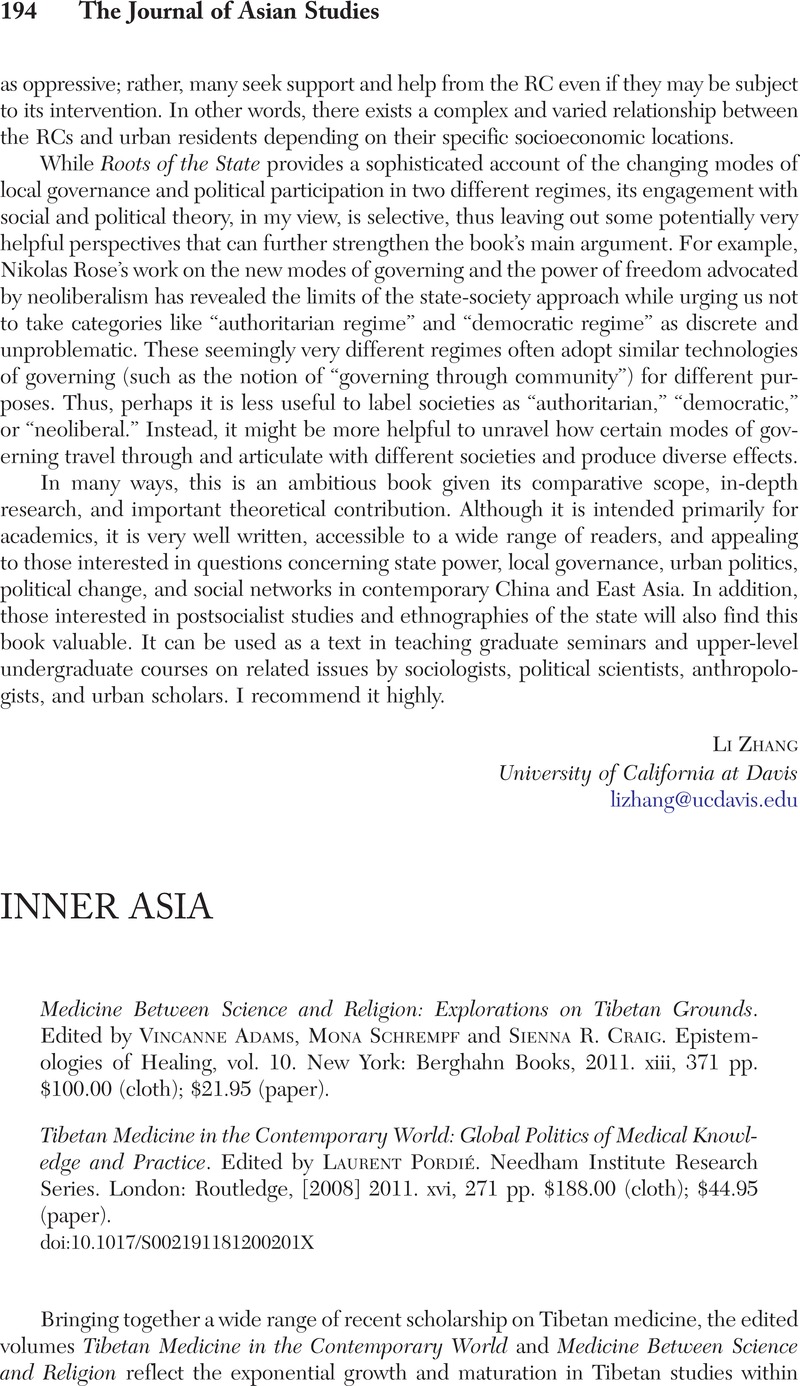Published online by Cambridge University Press: 18 March 2013

1 Other recent work meanwhile calls the completeness of such breaks within the PRC into question; see, for example, Hofer, Theresia, The Inheritance of Change: Transmission and Practice of Tibetan Medicine in Ngamring (Wein: Wiener Studien zur Tibetologie und Buddhismuskunde, 2012)Google Scholar.
2 It also brings scholarship on Tibetan medicine into conversation with other anthropology of Asian medicine, such as the work cited by the editors on this point: Zhan, Mei, Other-Worldly: Making Chinese Medicine Through Transnational Frames (Durham, N.C.: Duke University Press, 2009)CrossRefGoogle Scholar.
3 Hart, Roger, “Beyond Science and Civilization: A Post-Needham Critique”, East Asian Science, Technology, and Medicine 16 (1999): 88–114Google Scholar.
4 Following the recent work now well-known as “Qing Studies,” inquiry into plurality within the history of “Chinese” medicine and natural knowledge is now also beginning to arise among scholars of China. See especially Nappi, Carla, “Winter Worm, Summer Grass: Cordyceps, Colonial Chinese Medicine, and the Formation of Historical Objects,” in Crossing Colonial Historiographies: Histories of Colonial and Indigenous Medicines in Transnational Perspective, eds. Digby, Anne, Ernst, Waltraud and Muhkarji, Projit B. (Newcastle upon Tyne: Cambridge Scholars Publishing, 2010)Google Scholar.
5 Most historical work has tended to focus on the foundational medical texts of the twelfth and thirteenth centuries, and more recently the fifteenth through seventeenth centuries. See recent and forthcoming studies by Olaf Czaja, Frances Garrett, Barbara Gerke, Janet Gyatso, Theresia Hofer and Kurtis Schaeffer.